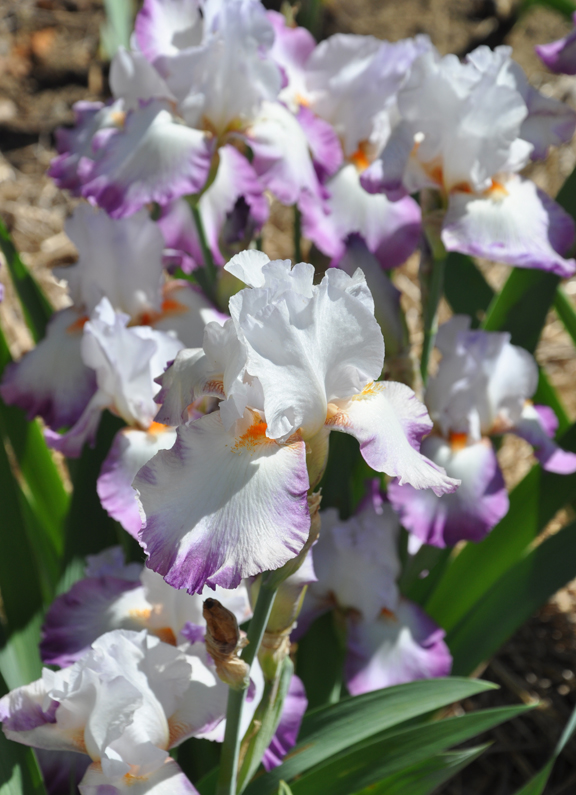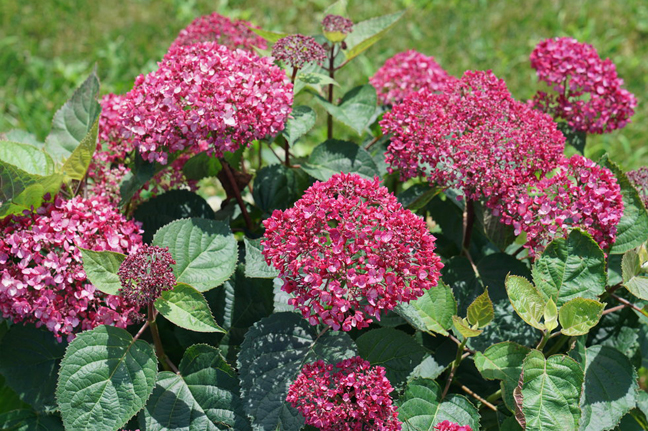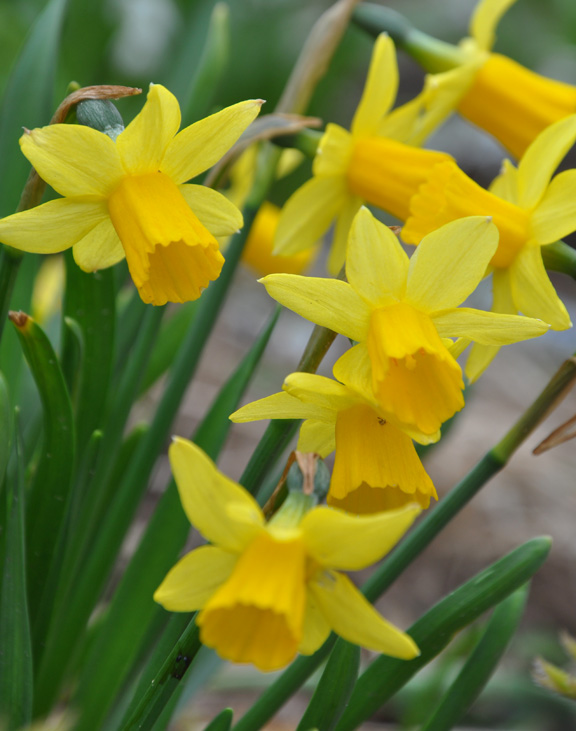
If your new to gardening this spring, welcome. There is so much to learn and discover!
After you've been gardening for a while, you begin to realize that there are some plants that are difficult to track down. I really want to expand my collection of hellebores this spring, but they are surprisingly hard to find at local garden centers and nurseries. The reason? I believe that's because hellebores have finished flowering well before the majority of shoppers make their first purchases of the season.
Other plants have the opposite problem. They bloom sometime after June when the majority of consumers have already made their buying decisions. Lilies are a great example. They typically don't flower until July. On top of this disadvantage, their strong central stem looks a bit awkward and unappealing in a plant pot. The sad thing is that lilies are actually a wonderful addition to the garden in mid-summer.

Growers naturally prefer plants that provide a quick return that is measured in days or months but not years. A trillium can take seven years to go from seed to a decent-sized, flowering plant. That's a long time to wait for a payday!
Some plants just don't get enough good press. Simply put: not enough people know about them. Native plants are a great example. If asked to name ten native plants, many people would struggle to move beyond Echinacea and Rudbeckia. This lack of demand means fewer companies grow them. Unfortunately, there is nothing more likely to fit easily into your garden than a plant that thrives in your local area.
By now, I think you'll get my point. It can be a challenge to find some of the plants that might be on your wishlist. Don't let that limit you! They are out there just waiting for you to discover them. As your knowledge and experience grow, you'll discover that you need to become a bit of a plant sleuth to track down some of those more intriguing options.
Searching for interesting and unusual plants might sound a bit like a chore but the hunt can actually be fun and rewarding. The internet makes it easy to seek out specialty nurseries, growers, and mail order companies.
Lots of these specialty growers offer open houses. As I have written many times in the past, there is nothing like seeing a plant right before you. You don't have to rely on the accuracy of a photograph in a catalog to gauge the flower's true color. When the plant is in front of you, it is also easy to get a clear impression of its mature height and spread. Often I find I have overlooked a plant or combination of plants until I have seen it in someone else's garden.
Once the pandemic is behind us, I would encourage you to visit some of these small businesses in person. Last year, I had the pleasure of attending one of the few open houses of the summer. This small business owner had devoted a few acres of his country property to growing irises for sale. Without a doubt, the rows of irises were a labor of love.
Bearded irises are one of those great perennials that don't always make it into garden centers. An iris's bloom stalk is tall and the flowers are easily damaged. It's best to plant irises in late summer/early fall, which is well after the time that nurseries experience the height of retail traffic. If you are lucky enough to find bearded irises, it would likely be a limited selection and nothing like the variety available at this iris farm.
Here's a look at the range of bearded iris available:
MDB: Miniature Dwarf Bearded Irises are the smallest and earliest of the bearded irises to bloom. They grow up to 8 inches tall and have flowers that are three inches or smaller.
IB: Intermediate Bearded Irises are 16 to 28 inches in height. The flowers are 3.5-5 inches in size and extend up above the foliage for a nice display.
MTB: Miniature Tall Bearded Irises are 16 to 18 inches tall and have flowers that are approximately 6 inches. The flowers are fragrant and are often used as cut flowers.
BB: Border Bearded Irises are 16-27 inches in height and are more resistant to wind damage than Tall Bearded Iris. At 5 inches the flower size is a little smaller than TB.
TB: Tall Bearded Irises are the last of the bearded iris to bloom. They are 27 inches or more in height.
Planting a Bearded Iris:
The best time to plant bearded iris is in July, August, or September. To ensure your iris will make it through winter, be sure to plant it at least 4 weeks before the first hard frost. Typically a bearded iris will bloom a year after it is planted.
Iris like full sun (6-8 hours of sunlight). The exception might be a hot climate where bearded irises might benefit from light shade in the afternoon. The only other requirement is good drainage. If your soil is poorly drained, add organic matter to improve drainage.
Plant your rhizomes at least 12 inches apart. Crowding them can create an impressive display, but you'll have to dig your iris up and divide them after just a couple of years. Spacing irises properly also encourage good air circulation and helps prevent disease.
If your iris is in a nursery container, remove it from the pot without disturbing the soil. Plant it at the same level or even slightly higher in the ground. Be careful not to cover the rhizome with soil. Water well. Continue to water every few days for about a week. Then water weekly until the iris has rooted.
Planting a bare-root bearded iris is a little more tricky. If the roots are looking a little wrinkled you can rejuvenate them by soaking the rhizome in a shallow pan of water (1/4 to1/2 an inch of water) for a couple of hours just before you do your planting. Irises like to have the top of their rhizomes visible to the sun. Dig a planting hole and fashion a hill of soil in the middle. The mound of soil should come up to ground level. Center the rhizome on top of the mound and spread out the roots down the sides of the hill. Bury the roots taking care not to cover the rhizome. Water well. Continue to water every few days for about a week. Then water weekly until the iris has rooted.
Tall Bearded Iris, 'Dancing Star'
Ongoing Care
Water
Established clumps of bearded iris do not need supplemental water. They should be fine with natural rainfall unless there is an extended period of drought.
Fertilizing
Generally speaking, bearded iris will do well in average garden soil and do not need regular fertilizer. If your soil is really poor, a light application of fertilizer can be added in early spring and again a month or so after bloom. Superphosphate or a well-balanced fertilizer (with an NKO ratio of 10-10-10 or 5-10-10) are two good options.
There are a couple of fertilizers that should be avoided. A fertilizer that is high in nitrogen can encourage lush growth that is susceptible to bacterial soft rot. A weed and feed fertilizer should also be avoided.
Do not mulch!
Mulch locks in moisture and can cause the soft rot of your rhizomes.
Avoiding Potential Problems
To avoid problems with disease and pests keep your iris clear of garden debris. Remove any dead foliage and after your iris finishes flowering, snap or cut the flower stalk off at the base. In the late summer/fall, prune back the foliage to discourage over-wintering pests.
Iris Borers
Adult borers are nocturnal moths that lay their eggs on garden debris in late summer or fall. They hatch into one-inch-sized larvae that chew into the leaves and then eat their way down to the rhizomes. Borer damage is often seen as notched wounds or slimy, wet-looking areas on the leaves. Once they eat their way down to the base of the plant, they begin to hollow their way through the rhizome. In August they pupate in the soil and hatch into more adult moths.
Bacterial Soft Rot
It is hard to imagine anything more putrid-smelling than mushy rhizomes infected with this fungal disease. Too much nitrogen in the soil, garden debris around the base of the plants, and too much water are all possible causes of this problem.
Dig up the infected plant/s and cut away the rotten parts of the rhizome (throw the infected sections in the garbage–do not compost them). Allow the cut areas to sit in the open air for a day or two. You can also disinfect the wounds with a solution of 1 part bleach to 9 parts water.
Bacterial Leaf Spot
Small pale spots on the foliage are a sign of a Bacterial Leaf Spot. Sadly there is no cure. Remove any infected plants and wash your tools with a 10% bleach and water solution.


































































